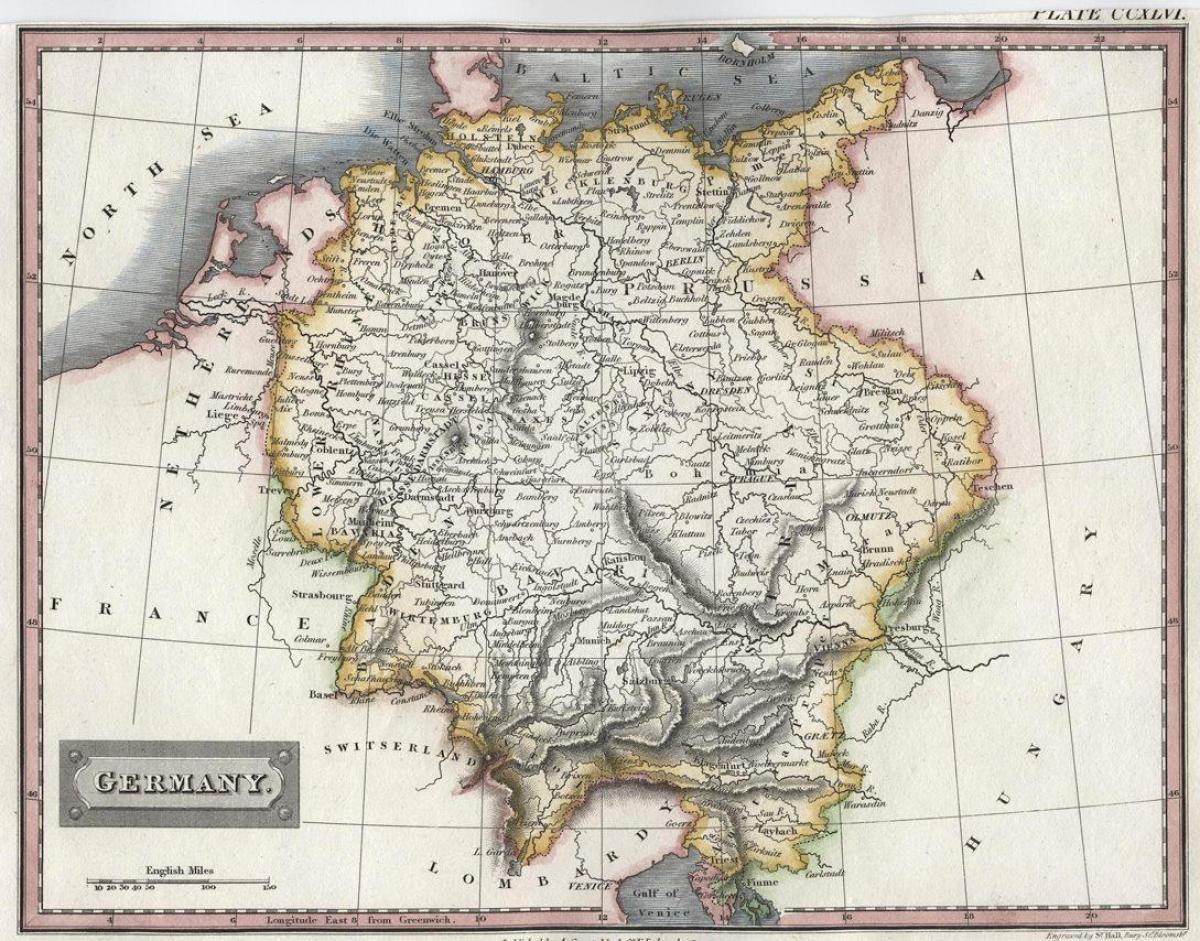search
Old Germany map
Map of Germany old. Old Germany map (Western Europe - Europe) to print. Old Germany map (Western Europe - Europe) to download. The ethnogenesis of the Germanic tribes is assumed to have occurred during the Nordic Bronze Age, or at the latest during the Pre-Roman Iron Age as its shown in the old Germany map. From southern Scandinavia and northern Germany, the tribes began expanding south, east and west in the 1st century BC, coming into contact with the Celtic tribes of Gaul as well as Iranian, Baltic, and Slavic tribes in Eastern Europe. Little is known about early Germanic history, except through their recorded interactions with the Roman Empire, etymological research and archaeological finds. In the first years of the 1st century, Roman legions conducted a long campaign in Germania, the area north of the Upper Danube and east of the Rhine, in an attempt at a further major expansion of the Empire's frontiers, and a shortening of its frontier line. They subdued several Germanic tribes, such as the Cherusci.
The concept of Germany as a distinct region in central Europe can be traced to Roman commander Julius Caesar, who referred to the unconquered area east of the Rhine as Germania, thus distinguishing it from Gaul (France), which he had conquered. The victory of the Germanic tribes in the Battle of the Teutoburg Forest (AD 9) prevented annexation by the Roman Empire. Following the fall of the Roman Empire, the Franks conquered the other West Germanic tribes. When the Frankish Empire was divided among Charlemagne heirs in 843, the eastern part became East Francia. In 962, Otto I became the first emperor of the Holy Roman Empire, the medieval German state as its mentioned in the old Germany map.
In the High Middle Ages, the dukes and princes of the empire gained power at the expense of the emperors. Martin Luther led the Protestant Reformation against the Catholic Church after 1517, as the northern states became Protestant, while the southern states remained Catholic as you can see in the old Germany map. They clashed in the Thirty Years' War (1618–1648), which was ruinous to the twenty million civilians. 1648 marked the effective end of the Holy Roman Empire and the beginning of the modern nation-state system, with Germany divided into numerous independent states, such as Prussia, Bavaria and Saxony. After the French Revolution and the Napoleonic Wars (1803–1815), feudalism fell away and liberalism and nationalism clashed with reaction. The 1848 March Revolution failed.


